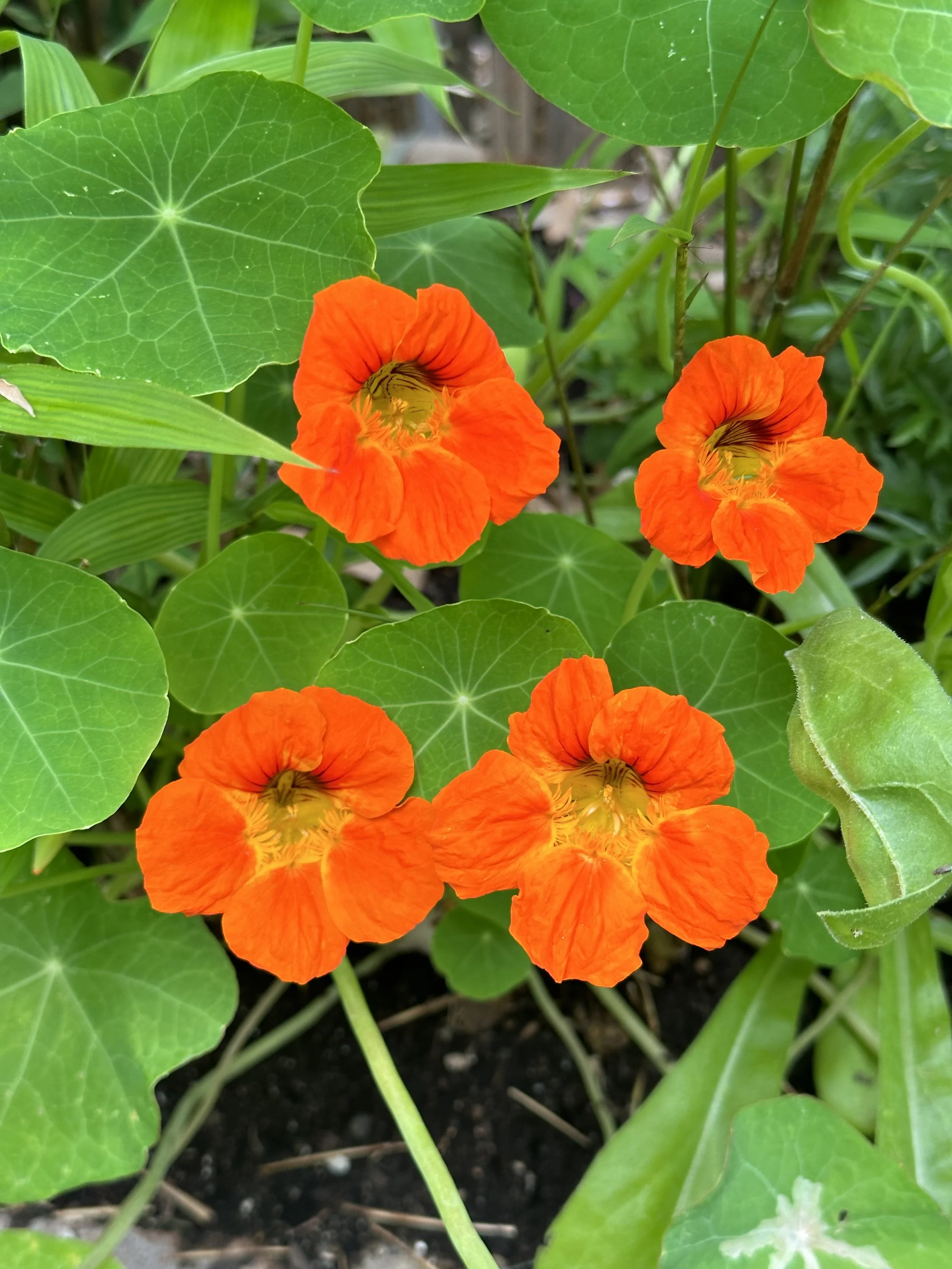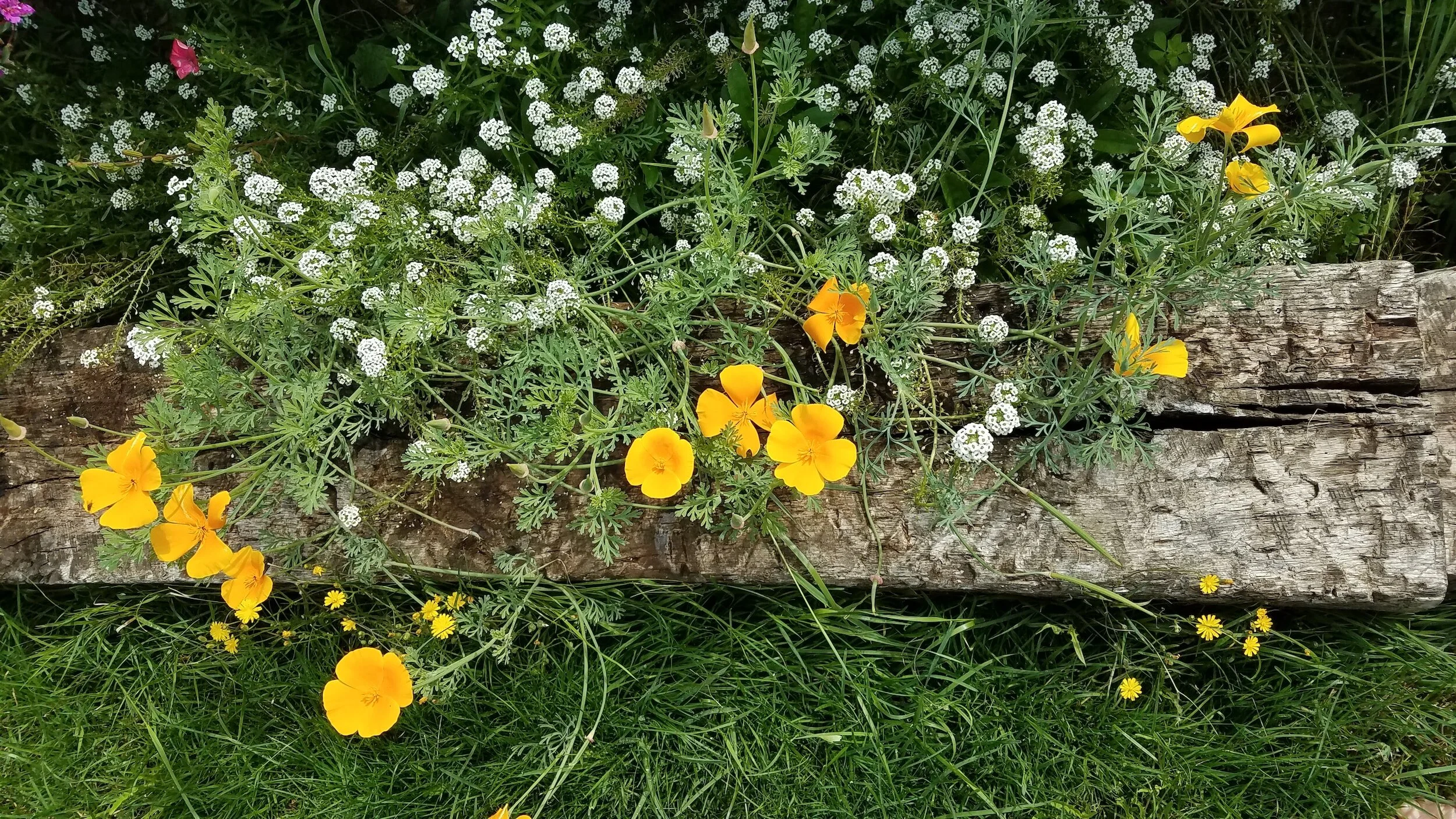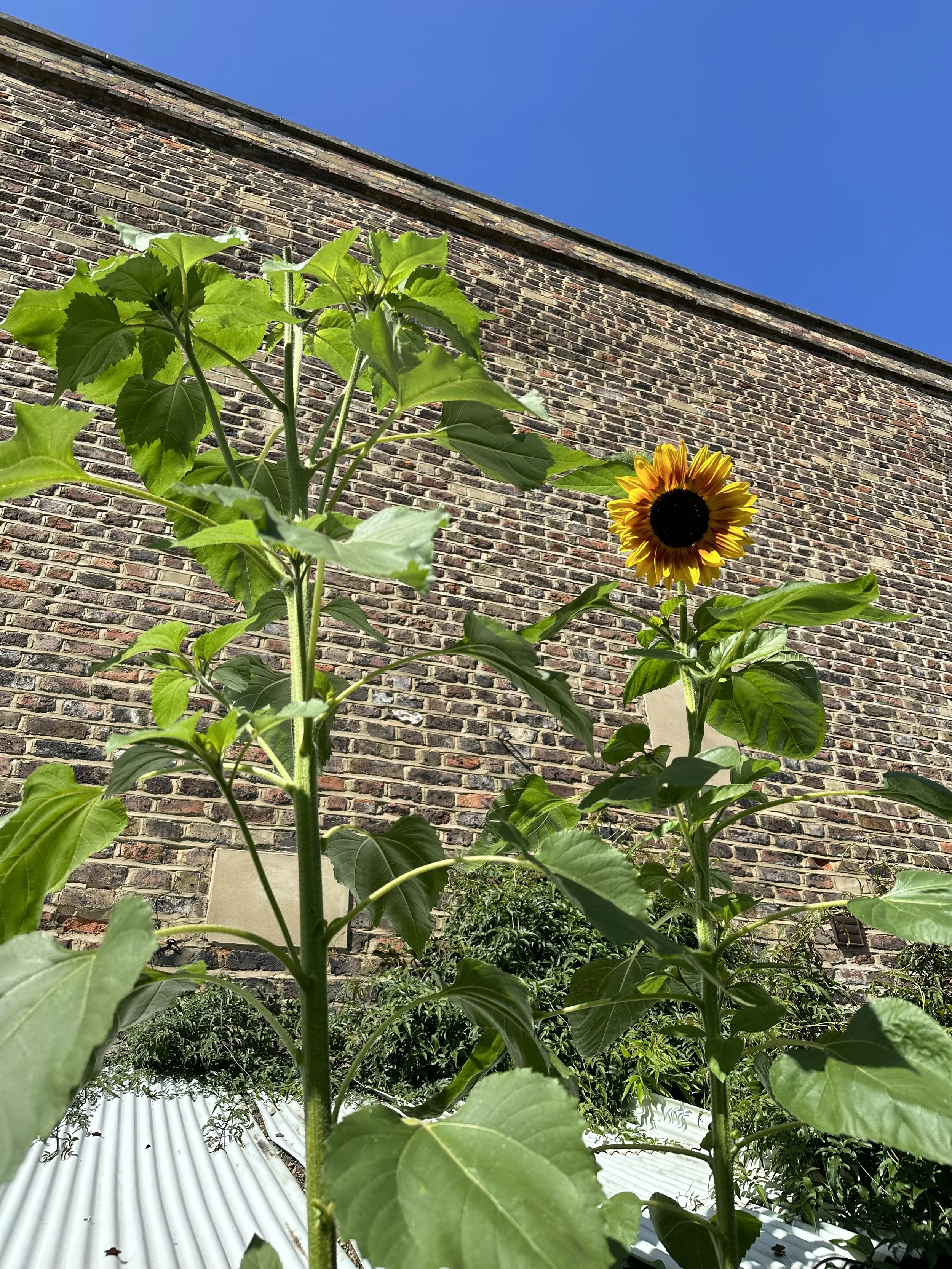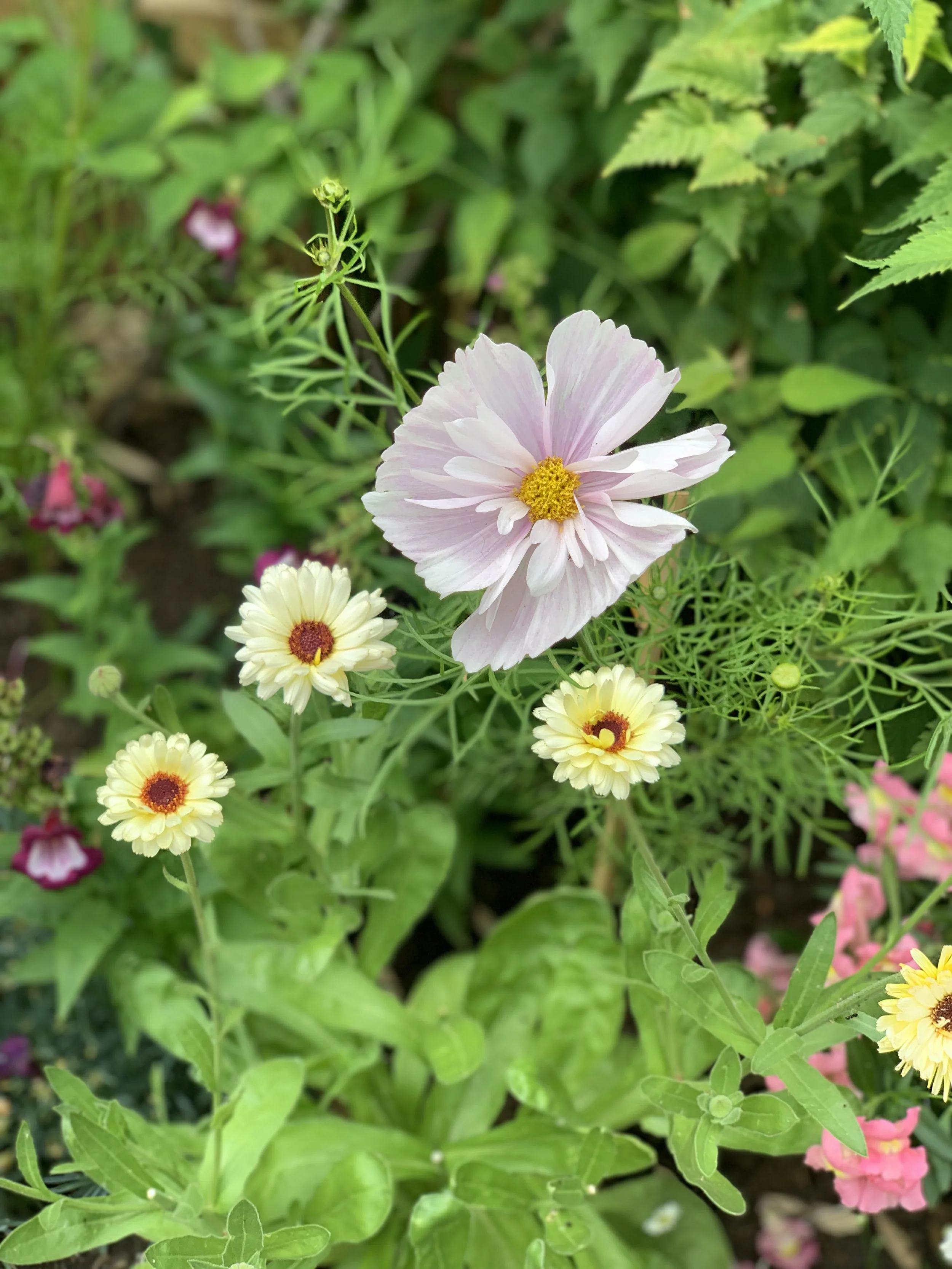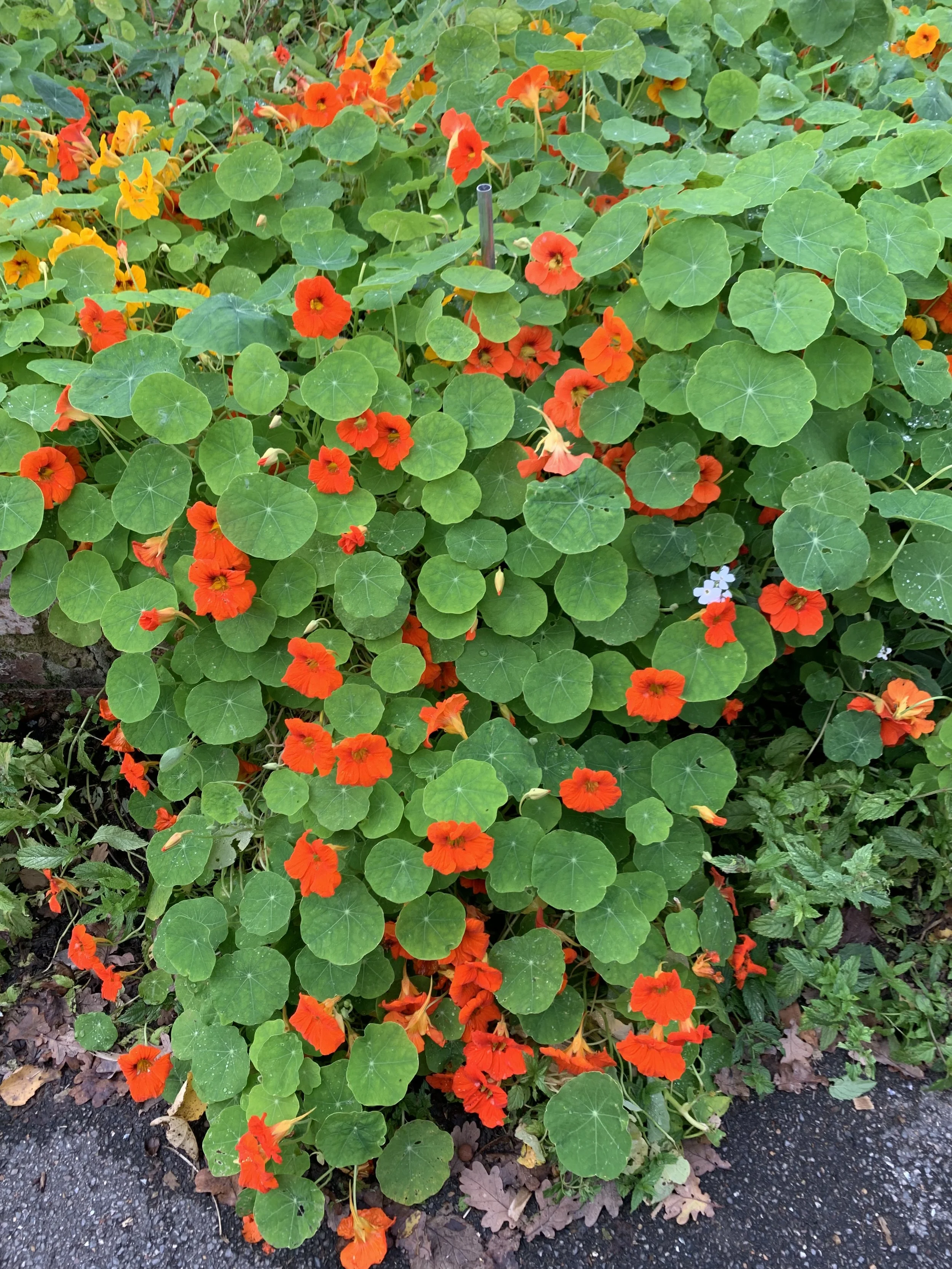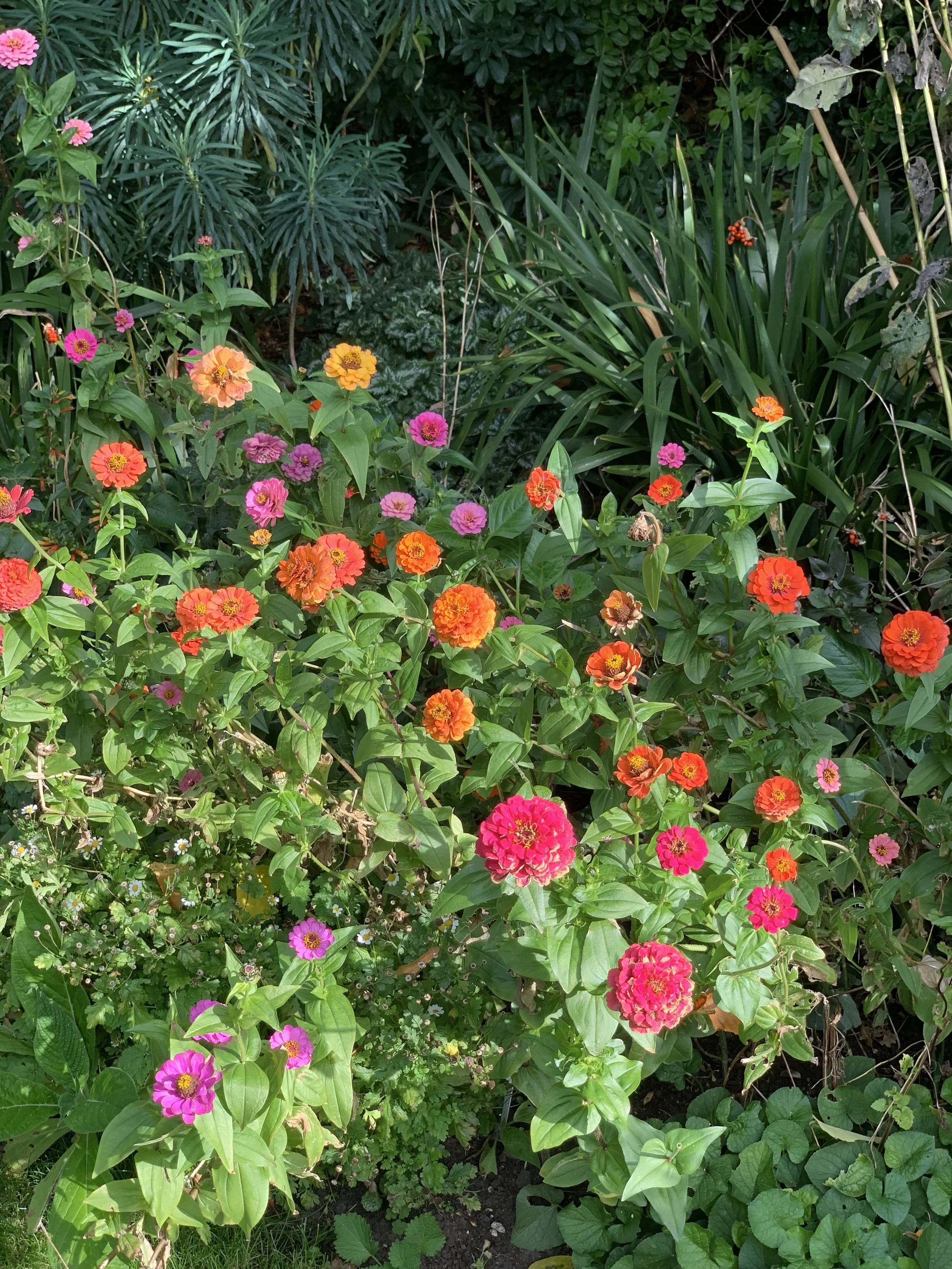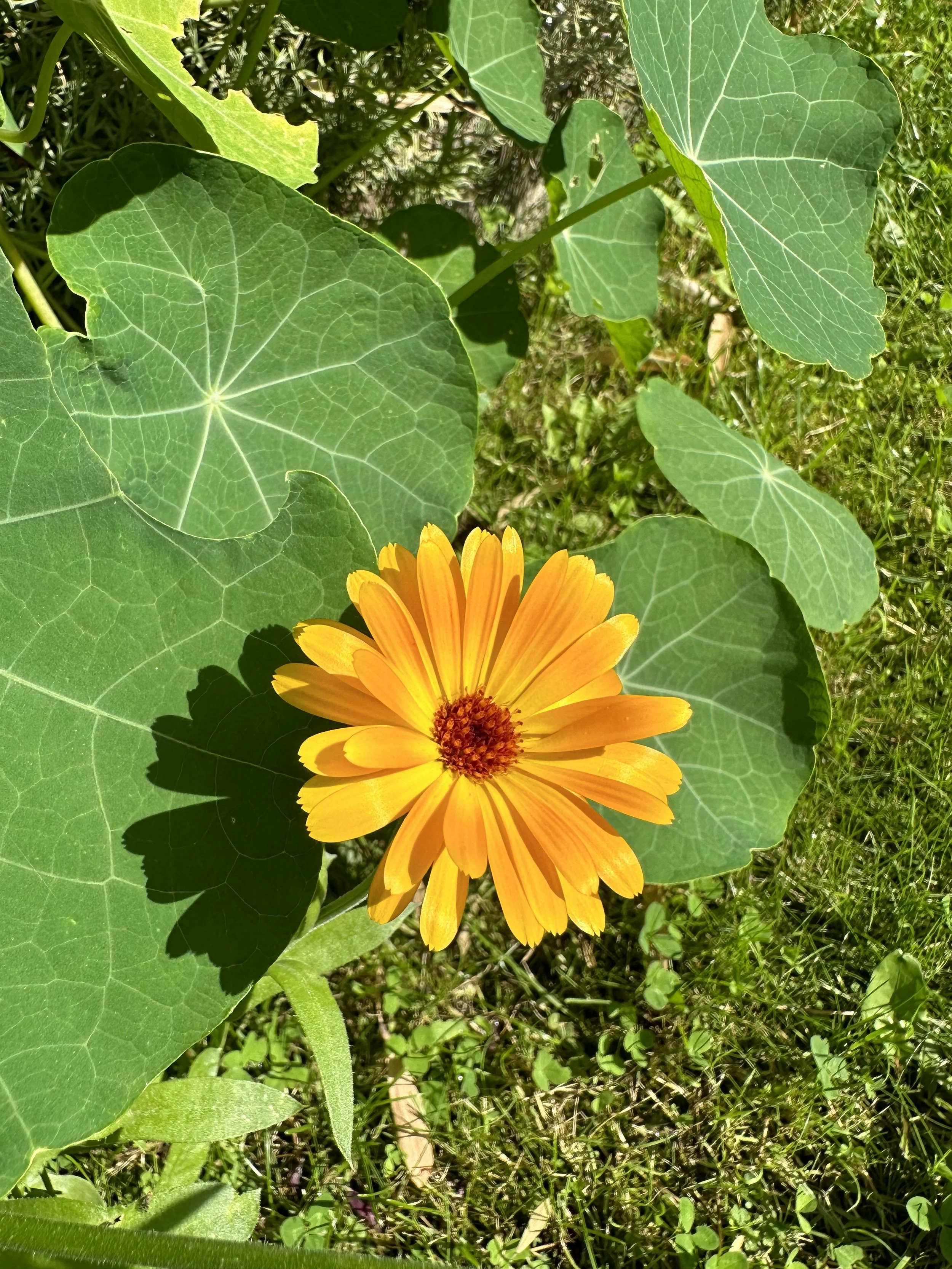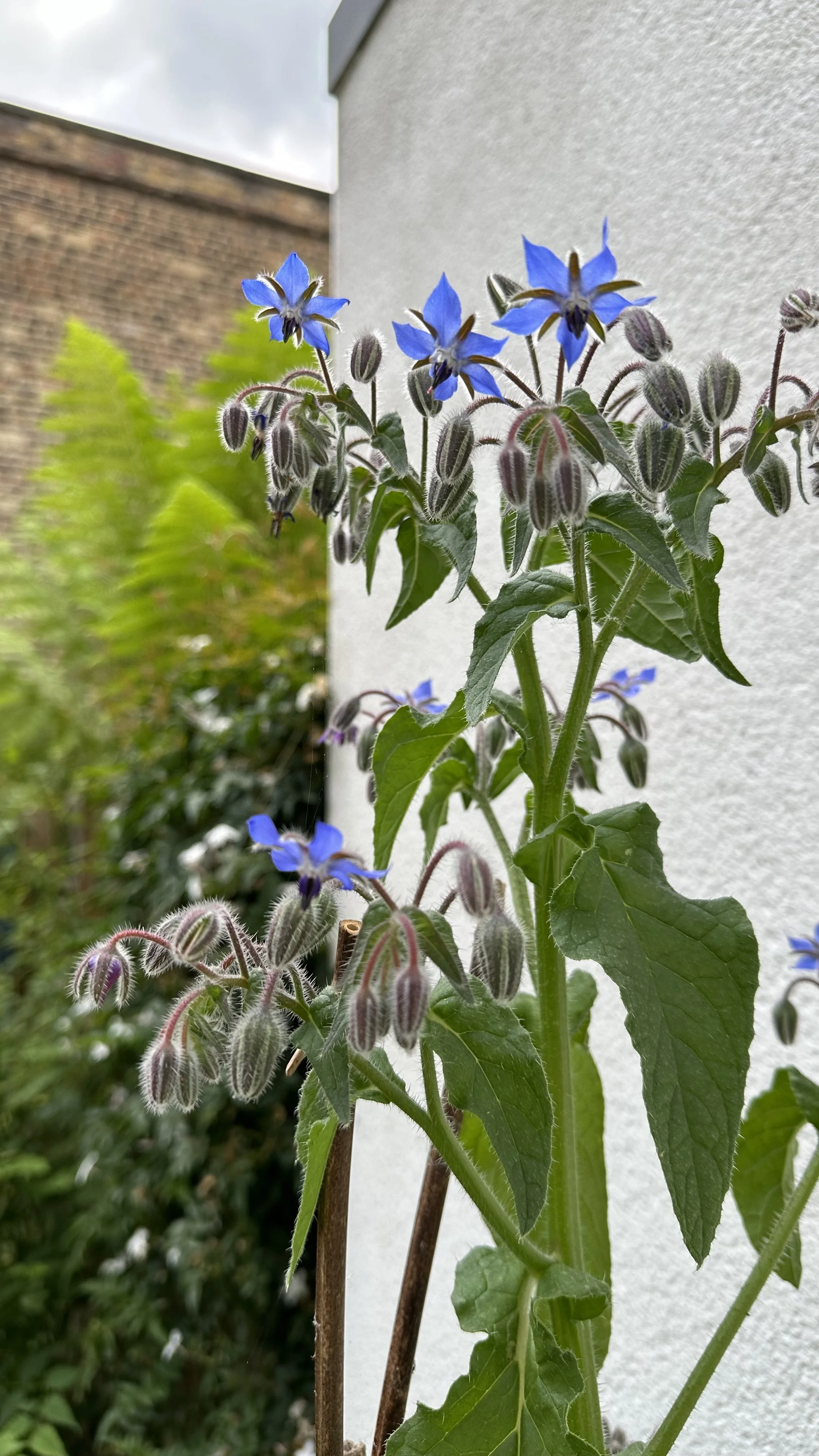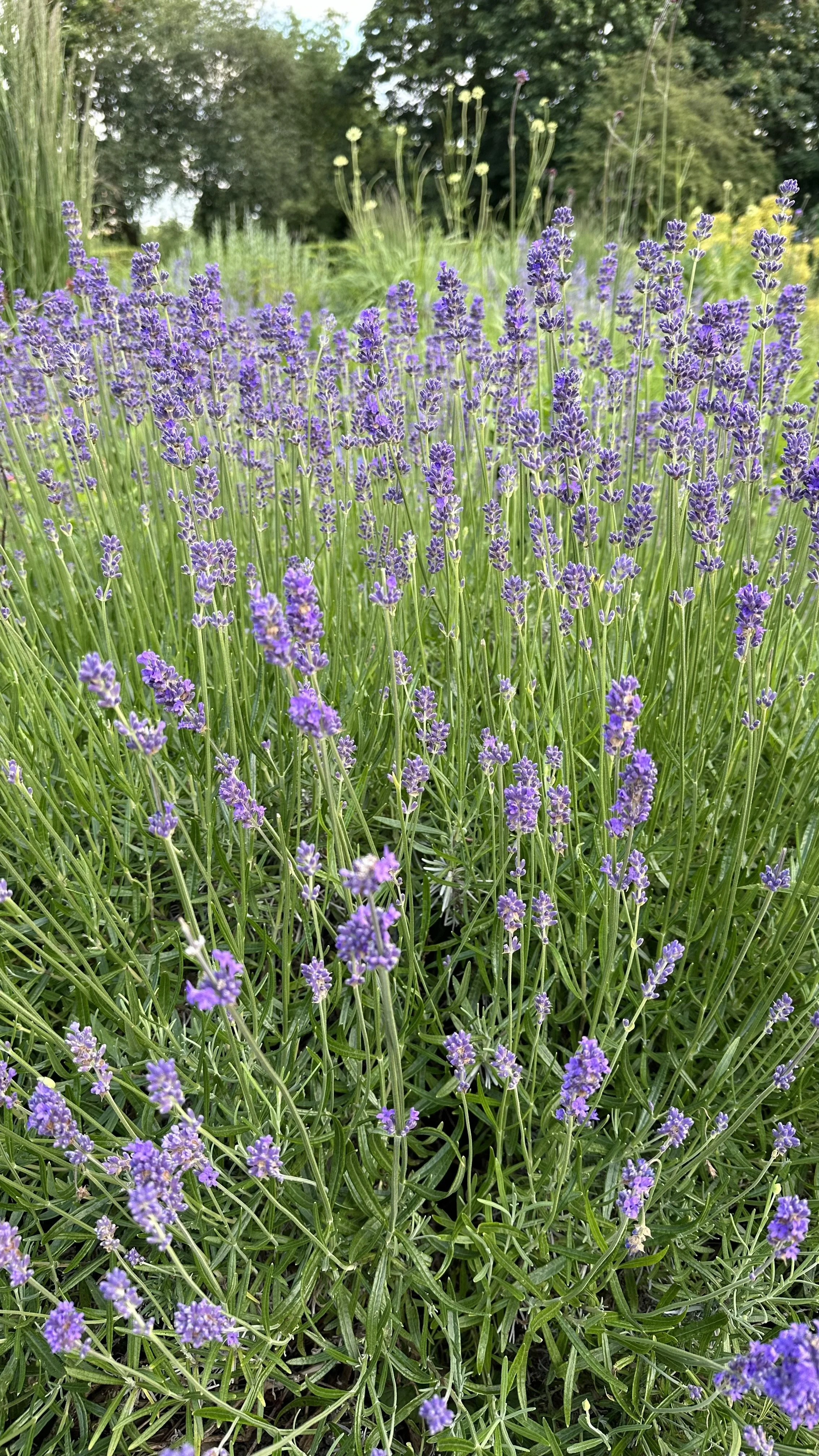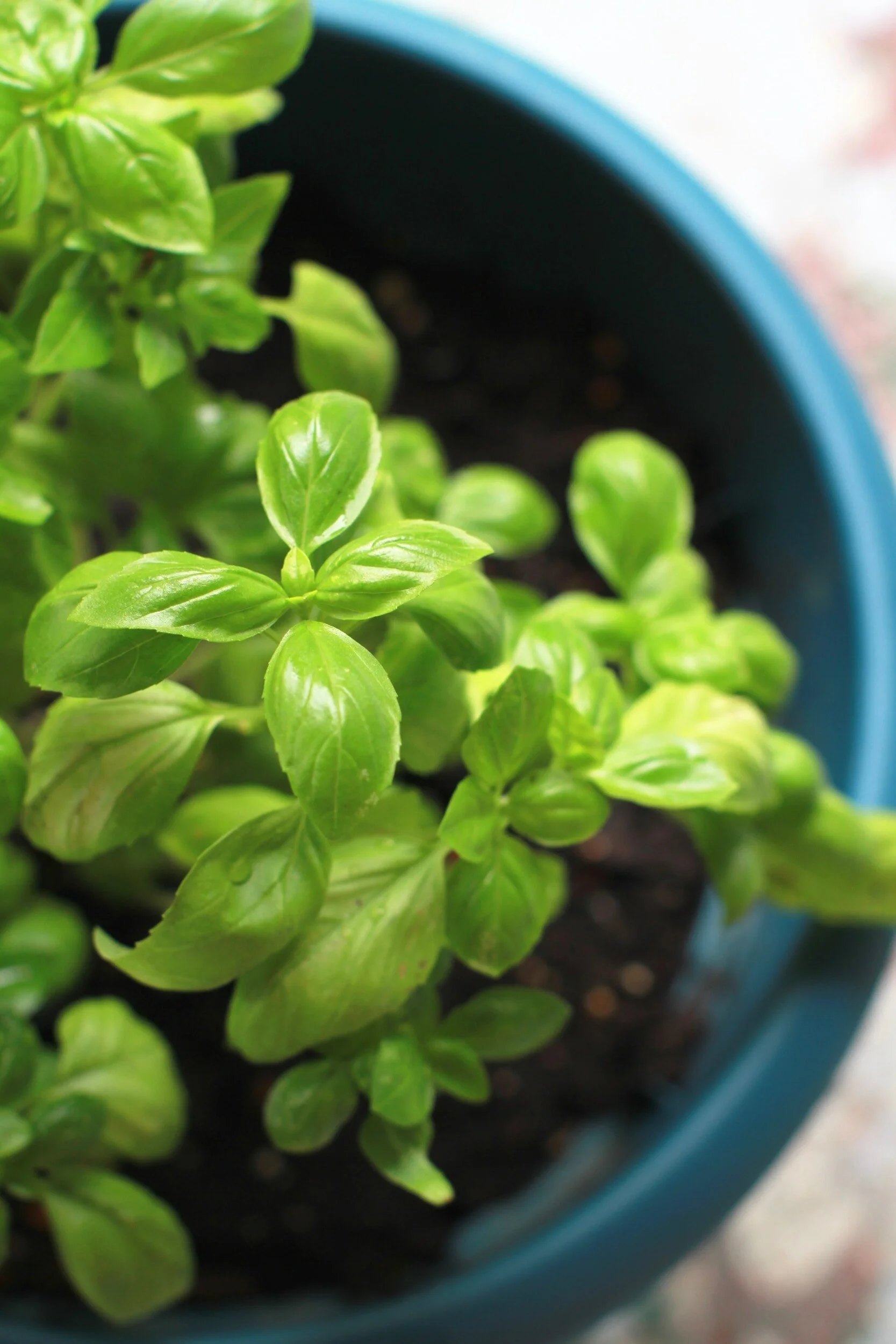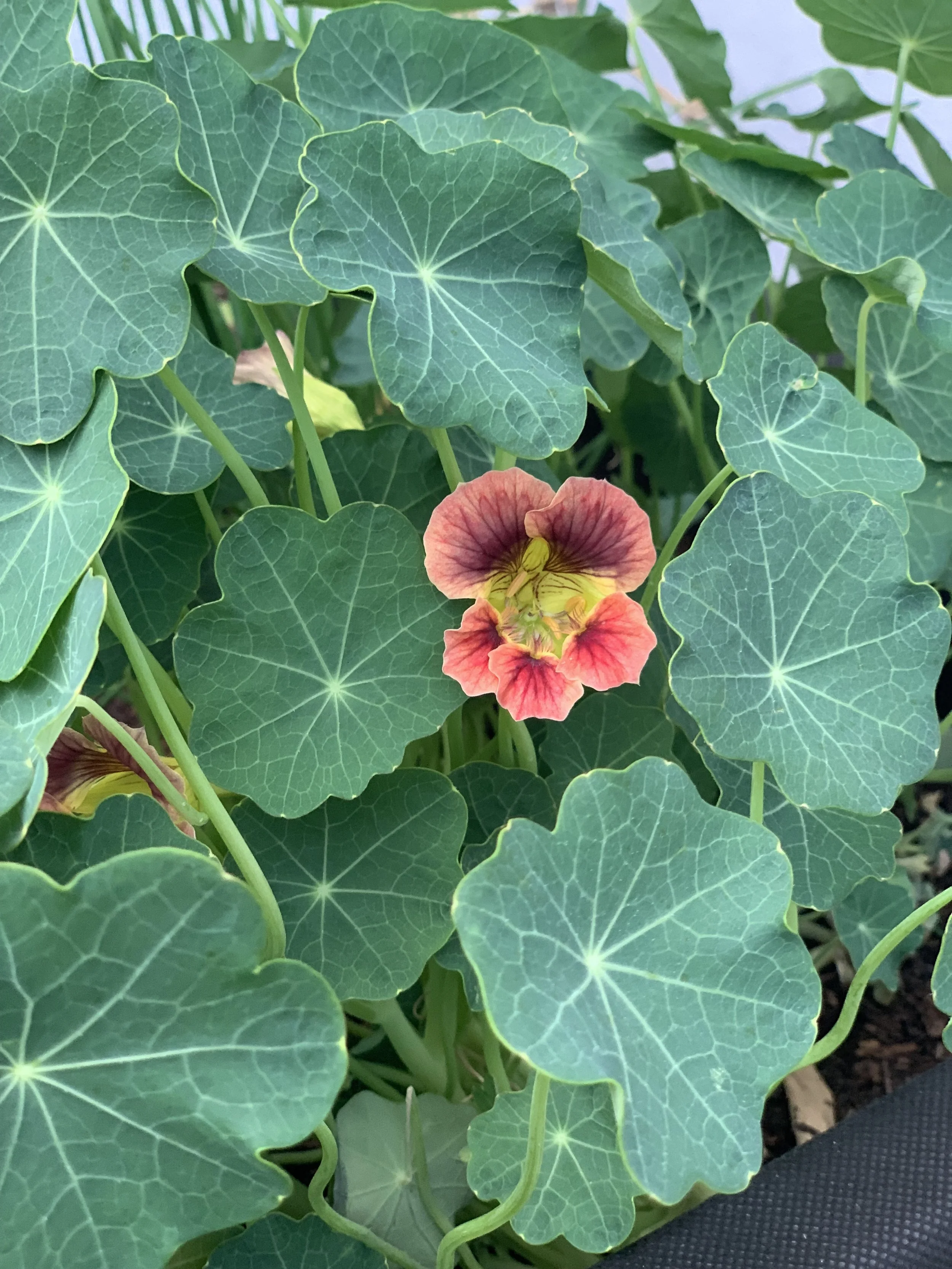Top 10 Flowers to Plant in Your Vegetable Garden
This article has links to products that I may make commission from.
Imagine your vegetable garden buzzing with life, where rows of veggies are interspersed with splashes of colorful annual flowers.
It's not just a feast for the eyes; it's a smart gardening move, especially when it comes to attracting beneficial insects and bees.
These friendly visitors are super important for your veggies to thrive, and in the summer, they're all about visiting gardens like yours.
So, let's dive into how mixing up flowers with your vegetable plot can do wonders, making your garden not just look amazing but also work wonders for your plants.
To learn more about creating a more sustainable garden check out my guides:
Benefits of Planting Flowers in Vegetable Gardens
1. Enhancing Biodiversity
Diverse Ecosystem:
Incorporating a variety of flowers attracts different species of insects and birds, creating a more balanced and resilient garden ecosystem.
Natural Balance:
This biodiversity can help in maintaining a natural balance, reducing the dominance of any single pest species.
2. Attract Beneficial Insects
Natural Pest Control:
Flowers like marigolds and sweet alyssum attract ladybugs and lacewings, which are natural predators of common garden pests like aphids.
Pollinators:
Flowers also attract essential pollinators such as bees and butterflies, crucial for the pollination of many vegetable crops.
3. Companion Planting Advantages
Pest Deterrent:
Certain flowers emit scents or possess properties that deter specific pests, providing a natural form of pest control.
Synergistic Growth:
Some flower and vegetable pairings can enhance each other’s growth, leading to healthier plants and better yields.
4. Soil Health Improvement
Nutrient Contribution:
Certain flowers, when they decompose, contribute essential nutrients back to the soil, improving its quality.
Root Systems:
The varied root systems of flowers can help in soil aeration and prevent soil compaction, which is beneficial for vegetable plant roots.
5. Trap Cropping
Diverting Pests:
Some flowers serve as trap crops, attracting pests away from your vegetables, effectively reducing the damage to your main crops.
6. Enhanced Pollination
Increased Crop Yield:
With more pollinators visiting the garden due to the presence of flowers, there’s an increase in the pollination rates of vegetable plants, often leading to higher yields.
For more inspiration, check out my guides:
Top 10 Flowers to Plant in Your Vegetable Garden
1. Marigolds
Benefits:
Marigolds are a gardener's ally, bringing numerous benefits to the vegetable garden.
These vibrant flowers are celebrated for their natural pest repellent abilities, particularly effective against nematodes and harmful insects.
They also excel in attracting beneficial insects like ladybugs and lacewings, which aid in controlling aphid populations and enhancing pollination.
In addition to pest control, marigolds contribute aesthetically with their bright colors, adding visual appeal and diversity to the garden layout.
Their presence in a vegetable garden can enhance the growth of nearby plants and improve the overall health and resilience of the garden ecosystem.
Planting Tips:
When planting marigolds in a vegetable garden, choose a sunny spot as they thrive in full sun, requiring at least 6 hours of direct sunlight daily.
They are adaptable to a variety of soil types but prefer well-drained soil.
Space the plants about 8 to 12 inches apart to ensure adequate air circulation and reduce the risk of disease.
Marigolds benefit from regular watering, keeping the soil moist but not waterlogged.
They are generally low-maintenance; however, deadheading spent blooms can encourage further flowering.
As annuals, marigolds should be planted after the last frost in spring, and while they don’t require heavy fertilization, a balanced, slow-release fertilizer at planting can promote healthy growth.
Here are my favorite marigold seeds to plant:
For more spring planting tips, check out my guide:
2. Sweet Alyssum
Benefits:
Sweet Alyssum is a valuable addition to any vegetable garden due to its ability to attract a wide range of beneficial insects, including predatory wasps and hoverflies, which help control pest populations.
Its dense, fragrant flowers create a carpet of bloom, providing a continuous source of nectar that lures pollinators essential for vegetable pollination.
This low-growing plant also acts as a living mulch, suppressing weeds and helping to retain soil moisture.
The delicate beauty of Sweet Alyssum adds an aesthetic charm to the garden, blending seamlessly with vegetable plants and enhancing the overall visual appeal of the garden space.
Planting Tips:
Sweet Alyssum prefers full to partial sun exposure and thrives in well-drained soil.
It's a versatile plant that adapts well to both garden beds and containers.
When planting Sweet Alyssum, space the seedlings or seeds about 6 to 8 inches apart to allow for their spreading habit.
These flowers benefit from regular watering, especially during dry spells, to maintain moist soil.
Although they are drought-tolerant once established, consistent moisture will promote fuller, more vibrant blooms.
For more watering tips, check out my guide How to Use Watering Globes.
Sweet Alyssum is a low-maintenance plant that doesn’t require much fertilization; a light application of a balanced fertilizer at the beginning of the growing season is sufficient.
Deadheading is not necessary, as it self-seeds and often reappears the following year, making it a hassle-free choice for busy gardeners.
Here are my favorite Sweet Alyssum seeds to plant:
For more tips, check out my guide:
3. Sunflowers
Benefits:
Sunflowers are a magnificent addition to vegetable gardens, offering more than just aesthetic value.
Their tall, striking presence is highly effective in attracting bees and other pollinators, essential for the successful pollination of many vegetable crops.
Sunflowers also act as natural trellises for climbing plants like beans and cucumbers, providing support and maximizing garden space.
Additionally, some gardeners utilize sunflowers as a living privacy screen or windbreak, protecting more delicate plants.
Their ability to extract toxins, like lead and arsenic, from the soil can also improve the overall soil health, benefiting neighboring vegetable plants.
Planting Tips:
Sunflowers thrive in locations with full sun exposure, requiring at least 6-8 hours of direct sunlight per day.
They prefer well-drained, nutrient-rich soil, and adding compost can enhance their growth.
When planting sunflowers, space them 12 to 24 inches apart, depending on the variety, as some can grow quite large.
They have deep roots, so ensure the soil is loose and well-tilled to accommodate this growth.
Regular watering is important, especially during their growth and bloom phases, but avoid overwatering as sunflowers are relatively drought-tolerant.
They are generally low-maintenance, but staking taller varieties can help prevent them from toppling over in strong winds.
Sunflowers are annuals and should be planted after the last frost, with some varieties maturing in as little as 70 to 100 days.
Here are my favorite sunflower seeds to plant:
Start your own cut flower garden with my guide: Cut Flower Garden: How to Get Started.
4. Cosmos
Benefits:
Cosmos are an excellent addition to vegetable gardens, mainly for their ability to attract a variety of pollinators, including bees and butterflies, which are vital for vegetable pollination.
Their bright and cheerful flowers not only add a splash of color but also bring in beneficial insects that help control pest populations.
Cosmos, with their tall, airy foliage, can provide a light, dappled shade to lower-growing plants, offering a beneficial microclimate on hot days.
They are also known for their ease of growing and low maintenance, making them an ideal choice for both novice and experienced gardeners.
Additionally, their cut flowers are perfect for bouquets, adding another layer of enjoyment to their cultivation.
Planting Tips:
Cosmos prefer a sunny location with at least 6 hours of direct sunlight each day.
They are not fussy about soil and can thrive even in poor soil conditions, making them suitable for a wide range of garden types.
When planting cosmos, space them about 12 to 18 inches apart, as they can grow quite bushy.
These flowers are drought-tolerant and generally require minimal watering once established, making them a great low-maintenance option.
Cosmos benefit from occasional deadheading to encourage continuous blooming throughout the season.
They are fast-growing and can be directly seeded into the garden after the last frost.
For continuous blooms, consider planting cosmos in succession every few weeks during the growing season.
Here are my favorite cosmos seeds to plant:
Learn more about starting a vegetable garden with my guide: What is a Kitchen Garden?
5. Nasturtiums
Benefits:
Nasturtiums are a valuable asset in vegetable gardens, known for their dual role in both attracting beneficial insects and acting as a trap crop for pests like aphids and squash bugs.
Their vibrant flowers and lush foliage not only add visual interest but also serve as a natural pest deterrent, creating a healthier environment for neighboring vegetable plants.
Moreover, nasturtiums have edible flowers and leaves, adding a spicy, peppery flavor to salads and culinary dishes.
This versatile plant also enhances the garden's biodiversity, attracting pollinators such as bees and butterflies, which are crucial for the successful pollination of many vegetable varieties.
Planting Tips:
Nasturtiums are easy to grow and can thrive in both full sun and partial shade, although more flowers are produced in sunnier spots.
They prefer well-drained soil but are not particularly demanding regarding soil quality; in fact, they tend to produce more flowers in poorer soils.
When planting nasturtiums, space them about 10 to 12 inches apart to allow for adequate spreading.
These plants require moderate watering, and it's important to avoid overwatering to prevent root rot.
Nasturtiums are generally low-maintenance and don't require regular fertilization; too much fertilizer can lead to more foliage and fewer flowers.
They can be directly seeded into the garden after the last frost risk has passed.
Deadheading is not necessary, as nasturtiums often reseed themselves, providing a continuous display year after year.
Here are my favorite nasturtium seeds to plant:
6. Zinnias
Benefits:
Zinnias are a splendid addition to vegetable gardens, primarily for their exceptional ability to attract a wide array of pollinators, including bees, butterflies, and hummingbirds, which are essential for the pollination of many vegetable crops.
Their vibrant and varied colors not only enhance the aesthetic appeal of the garden but also create a lively environment that supports biodiversity.
Zinnias are also beneficial in attracting beneficial insects that help in controlling pest populations, contributing to a more balanced and healthy garden ecosystem.
Easy to grow and maintain, these flowers can be a joyful addition for gardeners of all skill levels.
Check out my guide: How to Grow Zinnias in Pots: From Seed to Colorful Blooms.
Planting Tips:
Zinnias flourish in areas with full sun exposure, requiring at least 6 hours of direct sunlight daily.
They prefer rich, well-drained soil and benefit from the addition of organic matter or compost.
When planting zinnias, space them about 6 to 18 inches apart, depending on the variety, as some can grow quite tall and bushy.
Regular watering is important, particularly during dry spells, but be careful to avoid wetting the foliage to prevent fungal diseases.
Zinnias respond well to deadheading, which encourages more blooms and extends their flowering period.
They can be directly sown into the garden after the last frost date and will germinate within a week in warm soil.
Zinnias are fast growers and often bloom within 60 days of planting, providing a quick and colorful addition to the vegetable garden.
Here are my favorite zinnias to grow:
7. Calendula
Benefits:
Calendula, with its bright orange and yellow flowers, is not only visually appealing but also highly beneficial in vegetable gardens.
Known for attracting beneficial insects such as ladybugs and lacewings, it plays a crucial role in natural pest control by keeping aphid populations in check.
Calendula flowers are edible, often used to add color to salads and as a garnish, and possess medicinal properties, making them a versatile plant in both the kitchen and home apothecary.
Their presence in the garden can enhance the overall health of the ecosystem, encouraging biodiversity and aiding in the pollination of vegetables.
Planting Tips:
Calendula thrives in full to partial sun and prefers well-drained soil, although it is quite adaptable to different soil types.
When planting calendula, space the seeds or seedlings about 8 to 12 inches apart, as the plants can spread out and need room to grow.
Regular watering is important, especially in dry conditions, to keep the soil evenly moist.
For more watering tips, check out my guide How Often to Water Seedlings.
Calendula is relatively low-maintenance but benefits from deadheading to promote continuous blooming throughout the growing season.
It can be directly sown in the garden either in spring, after the last frost, or in fall in milder climates.
Being a hardy plant, calendula can withstand cooler temperatures, making it a great choice for extending the flowering season in a vegetable garden.
Learn more about growing calendula with my guide The Easiest Way to Grow Calendula from Seed.
My favorite calendula seeds to grow:
8. Borage
Benefits:
Borage is an excellent addition to vegetable gardens, primarily for its ability to attract pollinators, especially bees, which are essential for the pollination of many vegetable crops.
The star-shaped blue flowers of borage are not only visually striking but also edible, with a mild cucumber-like flavor, adding a unique element to salads and beverages.
Borage is known for its companion planting benefits, particularly when grown near tomatoes, squash, and strawberries, as it can deter certain pests and improve the overall health and flavor of these crops.
Additionally, borage has deep taproots that can bring up nutrients from deeper in the soil, thereby improving soil quality and benefiting surrounding plants.
Learn more: Borage Companion Planting: The Best Pairings.
Planting Tips:
Borage prefers a sunny spot but can tolerate partial shade. It thrives in well-drained soil and is relatively undemanding regarding soil fertility.
When planting borage, space the seeds or plants about 12 to 18 inches apart, as they can grow quite large and bushy.
Borage is drought-tolerant once established, but consistent watering during dry periods can promote healthier growth and flowering.
It is a self-seeding plant, so once established in the garden, borage can reappear year after year without much effort.
Borage can be directly sown into the garden after the danger of frost has passed.
It grows quickly and starts flowering within a few weeks of planting, providing a rapid source of beauty and benefits in the garden.
Here are my favorite borage seeds to grow:
9. Lavender
Benefits:
Lavender is a wonderful addition to vegetable gardens, not only for its delightful fragrance and aesthetic appeal but also for its numerous gardening benefits.
Its strong scent is effective in deterring common garden pests like moths, deer, and rabbits, providing a natural form of pest control.
Lavender is also a magnet for pollinators such as bees and butterflies, enhancing the pollination of nearby vegetable crops.
The presence of lavender can create a calming and soothing environment in the garden, which many gardeners find therapeutic.
Additionally, lavender has a range of uses outside the garden, from culinary applications to medicinal and aromatherapy uses, making it a versatile plant for any gardener.
Check out my guides: How to Take Lavender Cuttings: A Step-by-step Guide and How to Create a Lavender Hedge.
Planting Tips:
Lavender thrives best in full sun and requires well-drained soil, preferably slightly alkaline.
When planting lavender, ensure good spacing, about 18 to 24 inches apart, as the plants need ample air circulation to prevent fungal issues.
Lavender is drought-tolerant once established and prefers not to be overwatered. In fact, too much water can harm the plant more than too little.
Pruning is essential for maintaining a compact and healthy shape; it's best to prune lavender in the early spring or after it has finished blooming.
Lavender is a perennial and can be planted in the garden in spring or early fall.
It's important to note that lavender can take a few years to fully establish and reach its peak flowering, but once settled, it can be a long-lasting and low-maintenance addition to the vegetable garden.
Here is my favorite lavender to grow:
10. Basil
Benefits:
Basil is a highly beneficial herb to include in vegetable gardens, primarily for its ability to repel pests, including mosquitoes and flies, thanks to its strong scent.
Planting basil near vegetables like tomatoes and peppers can help deter pests naturally while enhancing the flavor of these crops.
Check out my guide: Growing Jalapeños in Pots: A Spicy Addition to Your Garden.
As a companion plant, basil can also improve the overall health and vigor of neighboring plants.
Additionally, basil attracts pollinators, such as bees, when it flowers, aiding in the pollination of various vegetable plants.
Beyond its gardening benefits, basil is a versatile culinary herb, used in a wide range of dishes, making it a practical and flavorful addition to any garden.
Planting Tips:
Basil thrives in warm conditions and requires full sun, ideally around 6 to 8 hours of direct sunlight each day.
It prefers well-drained, fertile soil and benefits from regular watering, especially during dry spells.
When planting basil, space the plants or seeds about 10 to 12 inches apart to allow for adequate growth and air circulation.
Basil is sensitive to cold temperatures and should be planted after the risk of frost has passed.
Regular pinching back of the tips will encourage bushier growth and prevent the plant from flowering too early, which can affect the flavor of the leaves.
Basil can be grown in garden beds or containers, making it a versatile choice for various garden setups.
To learn more about basil, check out my guides How to Harvest Basil Seeds the Right Way and The Best Basil Companion Plants.
Here are my favorite basil plants to grow:
FAQ Section
Can perennial flowers be used in vegetable gardens?
Absolutely! Perennial flowers are a great choice for vegetable gardens as they offer a range of benefits.
They return each year, reducing the need for annual replanting, and can provide consistent benefits such as attracting pollinators, improving soil health, and adding aesthetic appeal.
Perennials like lavender and calendula not only bring in beneficial insects but also can improve the soil structure over time.
Moreover, they add stability and structure to the garden design, offering a reliable framework around which annual vegetables and flowers can be planted.
Are there specific flowers to plant in vegetable gardens to deter pests?
Yes, several flowers are known for their pest-deterring properties when planted in vegetable gardens.
Marigolds are famous for repelling nematodes and other soil-borne pests, while nasturtiums can act as a trap crop for aphids.
Lavender and chives deter a variety of pests with their strong scents.
These plants work by either repelling pests through their natural odors, attracting beneficial insects that prey on pests, or acting as decoys to draw pests away from vegetables.
What are the best pollinator flowers for a vegetable garden?
The best pollinator-attracting flowers for vegetable gardens include sunflowers, cosmos, zinnias, and borage.
These flowers are particularly effective at drawing in bees, butterflies, and other pollinating insects, which are essential for the successful pollination of many vegetable crops.
Their bright colors and rich nectar supply make them attractive to a variety of pollinators, ensuring that your vegetable plants receive the pollination they need for optimal fruit and seed production.
Can flowers help with soil health in a vegetable garden?
Yes, planting flowers can significantly contribute to the health of the soil in a vegetable garden.
Some flowers, like marigolds and nasturtiums, have root systems that help aerate the soil and improve its structure.
Flowers can also add organic matter to the soil when they die back and decompose, enhancing soil fertility.
Additionally, certain flowers, like leguminous plants, can even fix nitrogen in the soil, making this crucial nutrient more available to other plants.
Is it beneficial to plant flowers with vegetables in terms of garden design?
Planting flowers alongside vegetables can greatly benefit garden design.
Flowers add color, texture, and variety, creating a visually appealing garden.
This method of interplanting, known as polyculture, can also have practical benefits, such as maximizing space, reducing weed growth, and improving overall garden health through increased biodiversity.
A well-designed vegetable garden with flowers can be not only productive but also a beautiful and inviting space.
Ready to learn more? Check out my guides:
